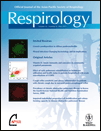Relationship between asthma control status, the Asthma Control Test™ and urgent health-care utilization in Asia
Conflict of interest statement: This study was funded by GlaxoSmithKline (GSK). All authors except F. Ko received travel grants from GSK to attend AIRIAP 2 Steering Committee meetings. N. N. An, J. G. Hong, J.-Y. Hsu, A. Mukhopadhyay, V. H. Nhung, F. Yunus and F. Ko have nothing further to declare. C. K. W. Lai acts as an adviser for GSK and has received lecture fees and travel grants from AstraZeneca and GSK. A. Bhome owns 20 shares in GSK India. T. de Guia has received research grants, lecture fees and travel grants from AstraZeneca, Boehringer Ingelheim, GSK, Sanofi-Aventis and United Laboratories. G. W. K. Wong has received lecture fees and travel grants from AstraZeneca, GSK and Merck Sharp & Dohme (MSD). B. M. Z. Zainudin has received lecture fees from AstraZeneca and travel grants from GSK. W. Boonsawat has received lecture fees from AstraZeneca and GSK. S. H. Cho has received lecture fees and travel grants from GSK, AstraZeneca and MSD. K. D. Gunasekera has been a co-ordinator on a voluntary basis for the GSK-sponsored ISAAC study.
ABSTRACT
Background and objective: Accurate assessment of control is an integral part of asthma management. We investigated the relationship between control status derived from the Global Initiative for Asthma (GINA), the Asthma Control Test (ACT) and urgent health-care utilization.
Methods: Asthma Insights and Reality in Asia-Pacific Phase 2 (AIRIAP 2) was a cross-sectional, community-based survey of 4805 subjects with asthma from urban centres across Asia. A symptom control index was derived from the AIRIAP 2 questionnaire using the GINA control criteria for day- and night-time symptoms, need for rescue medication, activity limitation and exacerbations; lung function was excluded. The main outcomes were asthma control, based on these GINA criteria and the ACT, and the relationship between control and self-reported urgent health-care utilization (hospitalization, emergency room visits or other unscheduled urgent visits) related to asthma over the previous 12 months.
Results: Each of the symptom criteria was significantly associated with urgent health-care utilization, with odds ratios (ORs) ranging from 2.25 (95% confidence interval (CI): 1.94–2.61) for daytime symptoms to 2.57 (95% CI: 2.29–2.90) for nocturnal awakening. Similarly, control status was significantly associated with urgent health-care utilization, with ORs of 0.19 (95% CI: 0.13–0.28), 0.70 (95% CI: 0.65–0.76) and 1.00 for controlled, partly controlled and uncontrolled, respectively. The optimal ACT cut-off score for identifying uncontrolled asthma was ≤19 for subjects aged ≥12 years. Urgent health-care utilization was reported by 57.2% versus 28.7% of patients scoring ≤19 versus >19 (P < 0.001).
Conclusions: The GINA control classification and the ACT are valid symptom-based measures that are significantly associated with urgent health-care utilization.




